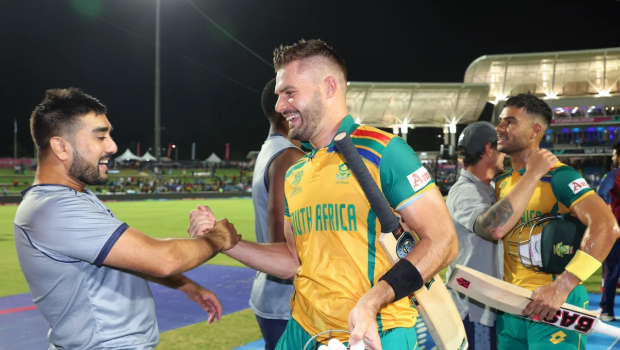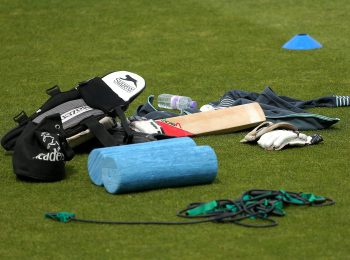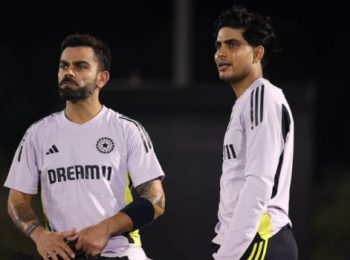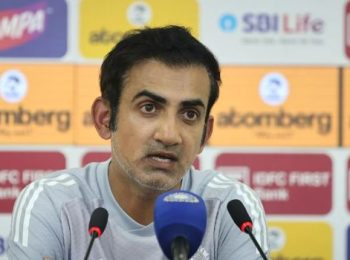On June 27, 2024, over three decades of South African World Cup pain was erased inside the two-odd hours it took for Aiden Markram’s team to demolish Afghanistan in the first semi-final of the 2024 Men’s T20 World Cup. This nine-wicket win is South Africa’s first in a knockout game at a global event in 1998, during which time several luminaries from the Rainbow Nation have had to publicly own up to the c-word after failing on the biggest day of all.
For a generation of fans who have lived through the heartbreak of Sydney 1992, Karachi 1996, Birmingham 1999, Durban 2003, St Lucia 2007, Nottingham 2009, Mirpur 2011, Colombo 2012, Mirpur 2014, Auckland 2015, Adelaide 2022 and Kolkata 2003 this result in Trinidad should come as a much-needed balm. For it was on this day that South Africa’s infamous history of bottling in the biggest matches was ended, a run of misfortune dating back 32 years.
Since much of their misery at World Cups had been self-inflicted, there have been plenty of skeptical eyes on Markram’s team before this edition of the T20 World Cup began. Less than two years ago in Adelaide, the Proteas were eliminated from the previous T20 World Cup after slumping to a shock 13-run loss to Netherlands. Seven months ago, Australia consigned South Africa to a fifth straight semi-final loss at Eden Gardens to end a campaign which began with Temba Bavuma’s men being touted as the likeliest to win the covered prize.
South Africa have always boasted a fine array of batsmen and bowlers at ICC events dating back to their first appearance at the 1992 World Cup after readmission, but over three decades of competing at these global events had yet to result in a single final appearance, with due respect to the team that won the inaugural ICC KnockOut Trophy in Dhaka.
What then was the difference in 2024 at this T20 World Cup? The nature of the pitches at this World Cup, the sheer class and depth of South Africa’s bowling attack, and the captaincy of Markram.
Critically, the conditions aided seam and spin bowling more than it did batting across South Africa’s campaign in the USA and the Caribbean. And on this account, having the most versatile and effective bowling ensemble of the tournament gave this team a massive advantage.
On overall tricky surfaces where totals of 115 often proved match-winning, South Africa’s bowling as a unit got the job done. In their opening match in New York, on a proper seam-friendly pitch, South Africa bowled out Sri Lanka for 77 and won by six wickets. In their next match, also in New York, South Africa kept Netherlands to 103 and squeezed home four wickets with seven balls remaining. The template had been set. South Africa might not have the batting to overhaul bigger targets, and so keeping their opponents to as few as possible was the goal.
Defending a total of 103 against Bangladesh, also in New York, South Africa’s bowlers and fielders kept it together to secure a four-run win that put them into the Super Eight round. Before the second round commenced, South Africa shifted to the Caribbean and dodged a bullet by defeating Nepal by a single run with 115 runs to defend. That win sent Markram’s team into the Super Eight stage believing that they had averted that stereotypical South African choke.
Up next were USA, who were beaten by 18 runs. Then came another narrow win, this time by seven runs over defending champions England at Gros Islet. In successive games, batting first, South Africa had posted totals of 194 and 163 to show promise with the bat. Things looked to have turned a corner, but then against West Indies at North Sound they had to fight tooth and nail to knockout the co-hosts with a three-wicket victory when chasing a DLS-revised target of 123 from 17 overs. The batting showed familiar jitters, but Marco Jansen clubbed 21 unbeaten runs from 14 balls to finish a tense chase. The belief had grown in the Proteas camp that indeed this World Cup was a different one.
Then came the big day, where past South African teams have bottled it. The semi-final versus Afghanistan, who had defeated Australia and Bangladesh to mark their first final-four appearance. And once more, it was the conditions that worked in South Africa’s favour.
So dominant was their bowling attack on a difficult pitch in Trinidad that Afghanistan were bowled out for just 56 in 11.5 overs, thus setting up an eighth win in a row in the tournament for Markram’s team. On a track offering extreme bounce and plenty of seam movement, Jansen took three wickets upfront, including the vital scalps of the tournament’s leading run-getter Rahmanullah Gurbaaz for a duck in the first over, while Kagiso Rabada clean bowled Ibrahim Zadran and Mohammed Nabi in his opening over to trigger Afghanistan’s collapse to 23/ 5 after five overs. That became 28 for 6 when Anrich Nortje collected the first of his two wicket before spinner Tabraiz Shamsi ran through the lower order with three wickets for six runs in the space of 11 deliveries.
History was made as South Africa reached their first World Cup final, and thus Markram’s team aimed to become the first South African side to win the T20 World Cup after sailing into the final unbeaten.
Chokers no more? We will truly know that after the final in Barbados this weekend, but by making it there unbeaten after eight games this South African team has gone where none of its predecessors have, and many will believe that irrespective of what happens on June 29, the curse has been lifted.



























